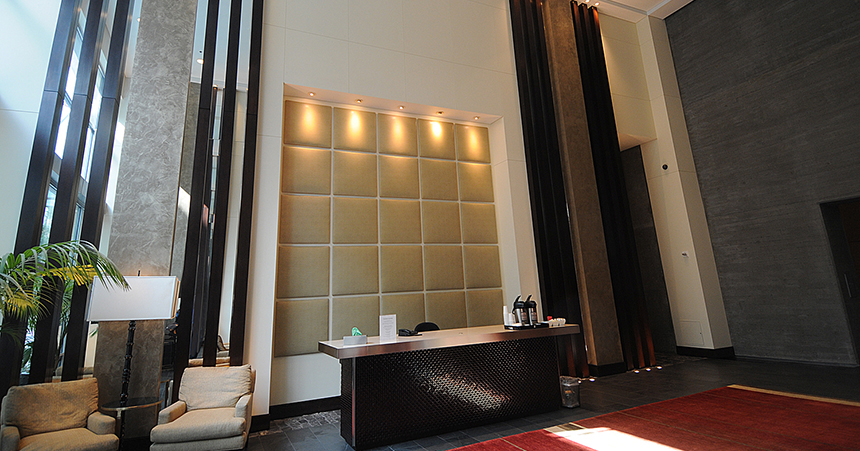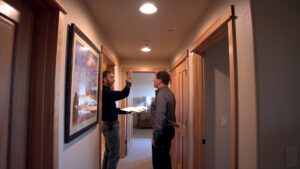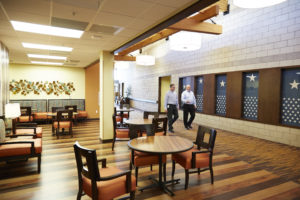
Lighting upgrades are often the best—and easiest—way to make energy-efficient improvements to your property and can pay back your investment through energy savings in as little as two years. Energy Trust of Oregon lighting expert Brian Morrison answers common lighting questions and shares tips on saving energy and money with lighting upgrades this winter.
Q: How do customers participate in the Energy Trust Lighting program?
- Lighten Up with LEDs—Instant incentives are available at point-of-purchase through participating distributors. This is a great pathway for small projects and regular maintenance because it reduces the property’s upfront costs. You can find participating distributors by clicking here.
- Cash incentives for lighting upgrades—Best for larger projects, standard lighting upgrades include a complete evaluation of energy-saving opportunities, qualifying cash incentives and the associated energy payback for completed projects. All projects are required to be pre-approved by a lighting specialist before products are purchased or installed. Our trade Ally partners, with support from our lighting specialists, will complete the required paperwork and walk you through the process. Projects can be broken into phases and multiple purchases to meet the property’s needs. Incentives are paid within 60-90 days after the project is complete and the final paperwork is submitted to the program for review.
 Q: What are the most common lighting opportunities at a multifamily property?
Q: What are the most common lighting opportunities at a multifamily property?
The top three most common opportunities for multifamily properties are:
- High-wattage exterior area lighting including wall packs, floods and parking lot pole lights.
- Areas with 8-10 hours of operation per day or more.
- Spaces that are intermittently occupied throughout the day that would benefit from adding occupancy sensors such as garages, stairwells, gyms, offices and restrooms.
Q: How can I calculate energy savings on lighting projects?
Energy savings are calculated with Energy Trust’s lighting tool, which estimates the annual energy savings based on the proposed project. The estimated energy savings allows a customer to quickly assess a substantial portion of the total savings from a lighting project to help determine if it’s cost-effective for the property to move forward with the upgrade.
Q: How do you decide if you should complete a lamp retrofit or replace the entire fixture?
You should consider three things when deciding whether to go with a lamp retrofit (or bulb replacement) of the existing fixture vs. a new fixture:
- Existing fixture condition and location
- If the fixture is worn and/or directly exposed to harsh weather conditions, we recommend a fixture replacement to ensure greater reliability and performance over the product lifetime.
- If the fixture is in good condition, functioning properly and a lamp retrofit is compatible with the existing fixture, a lamp retrofit can be a great option.
- Performance and lifetime
- New LED fixtures, when compared with LED lamps, often provide increased performance (i.e. efficiency, better control of light distribution) and extended lifetime. They are also better for applications in which light is critical for the use of the space and where control of the light distribution is needed to meet required light levels.
- Lamp retrofits are a suitable option for general applications and for converting standard light fixtures like sconces, ceiling mount fixtures and troffers.
- When selecting products, it is imperative to consider the quality and performance of an LED fixture or lamp and not just the price. The quality of the lighting has a significant impact on one’s perception of the environment, productivity, safety, and security. Going with the lowest cost option can result in an undesirable atmosphere and increase the lifetime costs to maintain the system.
- Projects goals
- If the goal is to reduce your property’s operating costs with the lowest upfront investment, a lamp retrofit is a great option.
- If the goal is to reduce costs, improve the property’s lighting and achieve the highest return on investment (lifetime savings), a new LED fixture is often the best option.
 Q: What are some of the maintenance impacts on converting systems to LED?
Q: What are some of the maintenance impacts on converting systems to LED?
Converting to LEDs will not only reduce the property’s energy costs, but it will also substantially extend the lifetime of the lamps or fixtures. With reduced maintenance costs, fewer replacement lamps and ballasts, and less time needed to maintain the lighting, properties will have more flexibility to address tenant needs and other projects that add value to the property.
Q: How can Energy Trust of Oregon help me get started on a lighting project?
Energy Trust will connect you with a lighting specialist, free of charge, to help educate decision-makers on lighting opportunities, products, the project process and connect them with resources. The goal is to ensure that customers have a thorough understanding of the opportunities and proposed projects to make the best decision possible to achieve their goals.
 To get started, contact a lighting specialist by calling 1.877.510.2130 or emailing multifamily@energytrust.org.
To get started, contact a lighting specialist by calling 1.877.510.2130 or emailing multifamily@energytrust.org.
Or contact lighting specialist Brian Morrison at Brian.Morrison@evergreen-efficiency.com.
